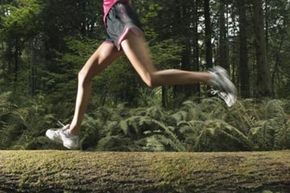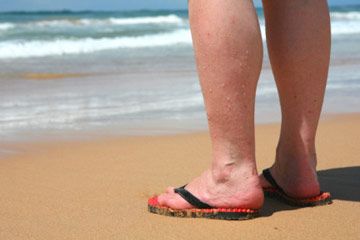If you've ever found blue, twisted, enlarged veins on your legs or ankles, then you know what it's like to live with varicose veins. The common but relatively harmless condition is caused when the valves that normally keep blood flowing from your legs to your heart weaken and start to leak. It's believed to be hereditary, but it happens most often to people who are overweight, pregnant, or who stand or sit still for long periods of time -- all of these situations cause increased pressure on veins in the legs. Getting regular exercise is one of the methods recommended for preventing varicose veins, but does it make any difference -- good or bad -- once you already have them?
The answer depends on the type of exercise you're doing, since different exercises affect varicose veins in different ways. Not all exercise is good -- you need to be careful not to overexert when you have varicose veins because strenuous activities can put too much strain on your legs. For example, high-impact exercises like running aren't usually recommended, because they may aggravate vein swelling.
Advertisement
But several other exercises will allow you to keep yourself fit and can help with blood circulation. Moderate, low- or non-impact exercise can be effective both as a deterrent and a treatment. Simple exercises like taking daily walks and flexing your ankles and calf muscles can help ease the symptoms and may keep the varicose veins from getting worse [source: WebMD]. To put it simply, keep your legs and feet moving whenever you can.
Even while sitting down, flex your calf muscles and rotate your ankles to maintain blood flow. These light exercises work because they increase blood circulation in your legs and keep the pressure from building up. You'll also want to avoid crossing your legs for long periods of time -- be sure to shift your legs while getting up to stretch every 30 minutes when you can [source: Mayo Clinic].
While exercising won't remove varicose veins, it can help ease some of the uncomfortable symptoms. Exercising regularly will keep your veins and legs strong, which is a preventive measure as well as a treatment. The main rule of thumb if you have varicose veins: Be wary of overexerting your legs, but keep yourself mobile and active whenever possible.
Continue on to the next page to see more articles on varicose veins, health and exercise.
Advertisement

